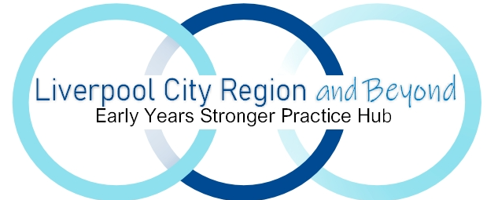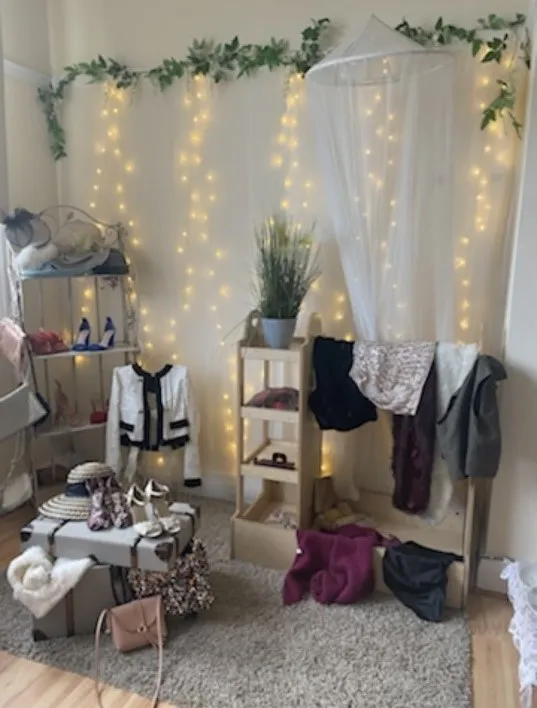
Kids Planet in Wallasey is located in a unique set of buildings on the local high street, one of which was a bank. Don’t worry the vault is not there anymore! The nursery is an ‘Outstanding’ provider.
Janet Molyneux, leader and manager, tells me that she and her team are passionate about creating awe and wonder for children in their learning spaces and provocations. This can be seen through their development of learning environments, especially in the application of soft lighting and use of real world furniture and resources throughout. Janet was concerned, especially post COVID, in the social and communication skills of the children who were coming into the nursery. In response to this, two years ago, Janet nominated two experienced members of staff to undertake an eight month Continuous Professional Development (CPD) programme: ‘Hanen, Learning Language and loving it’. This meant a significant investment of time for her staff especially in terms of cover. Janet found out about this opportunity through an invite from the Local Authority early years team in Liverpool.
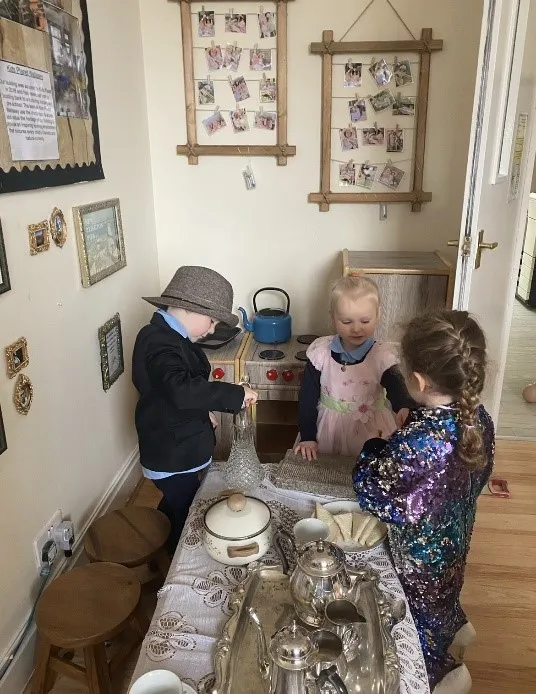
What does this approach look like?
The Learning Language and Loving It Programme is designed to provide early childhood educators with practical strategies to support all children in the classroom to build language and social skills, no matter what their learning and communication styles are.
The main strategies promoted by this programme include:
Promoting every child’s language development using natural everyday activities, routines and play. Becoming attuned to children’s interests so you can follow their lead, which is known to foster language development. Adjusting the way you talk to help children develop more advanced language skills. Promoting interaction among the children themselves. Facilitating language-learning in pretend play. Be a good conversation partner by using the OWL technique (Observe, wait, and listen) in interactions. Observe first so that you can tune into what the child is interested or engaged with. Wait, so that the child may initiate communication with gesture, action or words. Listen to what is actually said or communicated by the child so that you follow their lead and not your own agenda. This was shared with the wider team and adopted as a quick win very early on.
Using ‘SSTaRs’ in book sharing. (Stress. Show. Tell. Relate) which links closely to Interactive Reading.
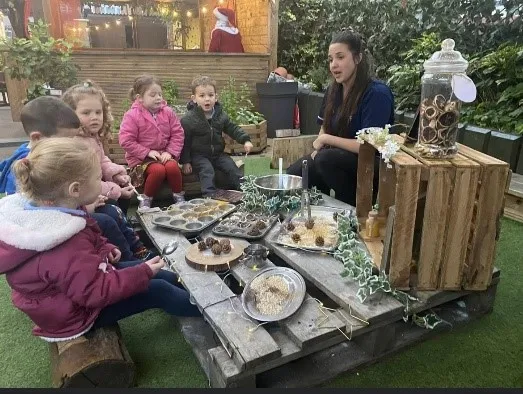
All adults showing a genuine interest in children’s communications at any age and responding by taking the lead from each child by commenting, echoing, repeating, recasting, narrating or pondering about the world and experiences alongside the children.
Inspiring and motivating children’s learning and development through providing interesting provocations and child initiated experiences.
What impact has the programme had?
Janet has seen:
Universal benefits for all children, but especially for those with communication difficulties.
Enhanced language from all children.
Improved social interactions between children, especially in turn taking and showing empathy for each other.
Ideas and simple strategies shared with parents and carers that are being used at home.
The team now has a strategy summary ‘Let’s interact’ that gives prompts for effective techniques for the whole team to use that have been taken directly from the programme.
Practitioners new to the setting, are teamed with a more experienced staff member in order to see the techniques in action, which ensures all staff are using the techniques appropriately and with understanding.
Peer observations make a note of any communication strategies employed or missed opportunities that could be used in the future in using a specific communication technique.
Staff are using commentary much more often instead of asking closed questions, resulting in more language from children.
Questions used are now more open ended and staff consider which questions to ask and when.
Book sharing for all children includes interactive reading using the SSTaRs prompts.
During gradual admission, children are identified early and teamed with Hanen experts as their key worker, according to need.
Children’s interests are captured daily at circle time, and facilitated in learning opportunities very quickly so to make the most of this information, motivating children’s learning and communication
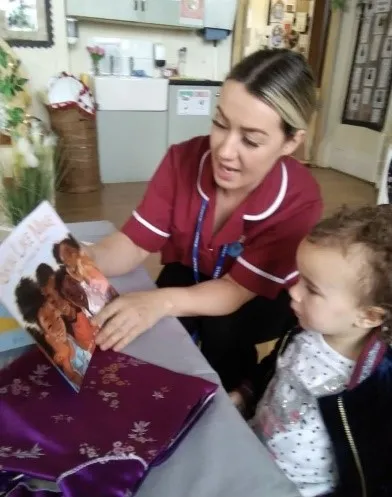
What can I do in my setting?
Have a look at adopting the OWL technique when listening to children.
Learn more about Interactive Reading.
Use some of these strategies that may help a child make a request, make a comment or ask a question:
Place a desired object out of reach… then wait
Offer a piece or portion of something… then wait
Chose an activity your child can’t do without help… then wait
Offer a choice… then wait
Pause a familiar activity/routine… then wait
Change a familiar activity… then wait
Hide objects in surprising places… then wait
When things go wrong… wait
Research and references
EEF | Communication and Language (educationendowmentfoundation.org.uk)
EEF blog: Interactive reading – More than just reading a book! | EEF (educationendowmentfoundation.org.uk)
https://www.hanen.org/SiteAssets/Helpful-Info/Research-Summary/Learning-Language-Research-Summary.aspx
Early Childhood Language and Literacy Development Articles (hanen.org)
